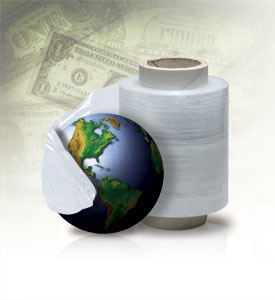Industry Insights: Films
North American BOPET Film Industry Expands

 Over the last fifteen years four companies have remained at the forefront of BOPET film production in the US and, in fact, globally – DuPont-Teijin, Toray, Mitsubishi and SKC.
Over the last fifteen years four companies have remained at the forefront of BOPET film production in the US and, in fact, globally – DuPont-Teijin, Toray, Mitsubishi and SKC.
But these companies have done little to expand the North American BOPET film Industry in the last five years, mainly because there wasn't a lot of money in it.
Demand in North America in 2012 of 462,000 tons easily outstripped local production of 350,000 tons with the balance being met by imports – imports from Asian plants, often with lower manufacturing costs and greater efficiencies.
Partly as a result of this competition and partly for strategic reasons, DuPont has closed obsolete and uncompetitive plants in the US and moved some of its lines to China. During this time Mitsubishi, Toray and SKC have been actively pursuing ways of making their existing capacity more profitable, while fighting an incoming tide of thin film imports largely from India, China, Indonesia and Thailand.
During the last five years, buyers of film have explored alternative suppliers outside of the US and many have become approved. Film quality has improved from places such as China, and there is a greater acceptance that non-US producers can in fact support US buyers adequately.
Not a market which you would think shrieks "opportunity for investment," but one all the same that has seen just that:
- Carestream bought a plant from Kodak and is successfully substituting the imaging films it previously made with a range of new films for electronics markets using its in-house coating technologies, so is likely to continue to survive.
- SKC intends to expand its plant (finally) with a thick film line in 2014, after originally announcing a six-line facility in 2003, but only installing three lines.
- Uflex has already built a two-line plant in Mexico to supply Central and South America, but it is also used to export to the US, and this month they have opened a new factory in the US. This plant is likely to have another line installed in the next couple of years, which will then make Uflex the largest producer of polyester films in North America and the second largest producer of film globally.
- One of Uflex’s main Indian competitors, Polyplex, has just started up a new line at its recently completed US plant, adding to its capacities in Turkey, India and Thailand.
Everyone welcomes this new investment, even those currently operating in the market, as it shows that producers are committed to their US customers and still see a long term future for polyester film manufacturing in the USA.
Over the next five years, North American consumption is expected to increase at approaching 4 percent p.a. to reach around 560,000 tons in 2017, driven largely by US demand.
Thin films are expected to account for the majority of the growth, with volumes likely to increase by around 50,000 tons by 2017.
North American thick film demand is expected to reach around 123,000 tons over the same period.
A proportion of this increase will undoubtedly be met by recent and future capacity expansions within the region. However, even with all of the additional capacity planned for North America, US and Mexican production will still fall short of regional demand by 2017 [still room for further investment?].
About the Author
Paul Gaster is director, flexible packaging at PCI Films Consulting Ltd. PCI provides market information and analysis to businesses that make or buy specialty and oriented plastic films, aluminum foil and specialty papers.
PCI Films Consulting Ltd.
Statistics quoted in this article are drawn from PCI Films Consulting Ltd’s recently published report World Market for BOPET Films to 2017. Go to www.pcifilms.com and look under Market studies to find more flexible packaging industry-related studies, including this one.
Looking for a reprint of this article?
From high-res PDFs to custom plaques, order your copy today!





